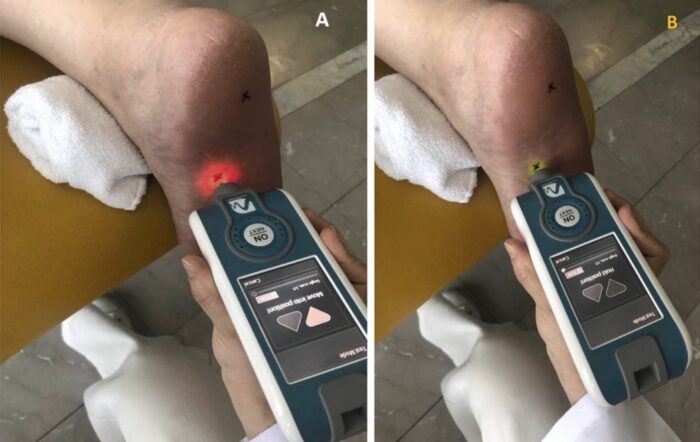Publications

Plantar fascia stiffness in patients with type 2 diabetes mellitus: Stiffness effect on fall risk and gait speed
Authors: Rumeysa Cakici 1, Tulay Cevik Saldiran 2, Ilke Kara 2, 3, Hasan Acik 4
Affiliations:
- Department of Physiotherapy and Rehabilitation, Institute of Health Sciences, Istanbul Okan University, Istanbul, Turkey
- Department of Physiotherapy and Rehabilitation, Faculty of Health Sciences, Bitlis Eren University, Bitlis, Turkey
- Department of Physical Therapy and Rehabilitation, Institute of Health Sciences, Dokuz Eylul University, Izmir, Turkey
- Department of Internal Medicine, Faculty of Medicine, Istanbul Okan University, Istanbul, Turkey
Journal: The Foot - September 2023, Volume 56, Article no. 102020 (DOI: 10.1016/j.foot.2023.102020)
-
Field & Applications:
- Medical
- Endocrinology
- Diabetes
- Normatives
- Validity
- Determination of PF stiffness with a simple method such as a myotonometer may be useful in the early diagnosis of diabetes-associated foot ulceration.
Aims: The primary objective was to compare patients with type 2 diabetes mellitus (T2DM) and healthy peers in terms of plantar fascia (PF) stiffness, fall risk, and gait speed. The second objective was to examine the relationship between stiffness of PF and fall risk, gait speed.
Methods: Fifty patients diagnosed with T2DM (mean duration = 10.74 ± 7.07 years) were included. Myotonometer was used to evaluate the stiffness of PF. To assess the risk of falling, and gait speed, the International Fall Efficiency Scale (FES-I) and the 4-Meter Gait Speed Test (4mGST) were used, respectively.
Results: Compared to healthy controls, PF stiffness (right foot mean difference = 148.99 N/m, left foot mean difference = 113.13 N/m p < .001) was higher in the T2DM group. The FES-I and 4mGST scores were worse in the group with T2DM (p < .05). 12.8 % of FES-I and 23.4 % of 4mGST variance were explained by stiffness of PF.
Conclusions: The results of the study showed that the stiffness of PF changed in patients with T2DM. There was a decrease in gait speed and an increase in the risk of falling as PF stiffness increased.

Figure 1. Assessment of plantar fascia stiffness.
Keywords: tissue, hardness, risk of falling, balance, diabetes
In conclusion, the results of the study showed that the risk of falling and PF stiffness of individuals with T2DM were higher than in healthy adults. Gait speed slows in the presence of T2DM. In adults, as the PF stiffness increased, a decrease in gait speed, and a higher risk of falling were observed. In further studies, interventions to reduce PF stiffness in individuals with T2DM can be applied to examine the effect on fall risk, and gait speed performance. Possible risks of ulceration in the PF can be prevented by applying interventions to reduce PF stiffness in patients with T2DM.


